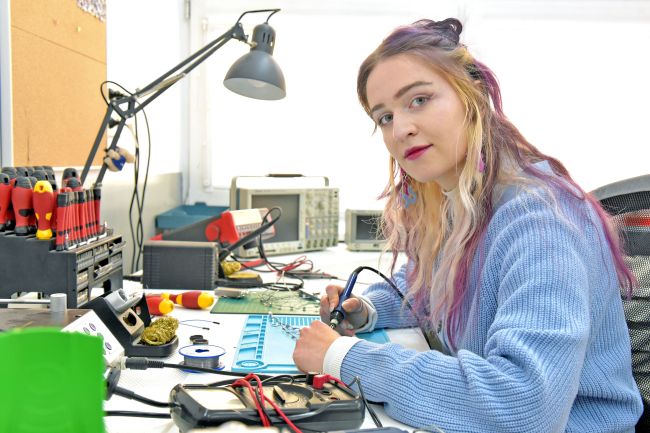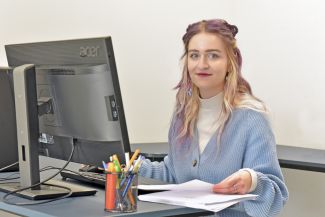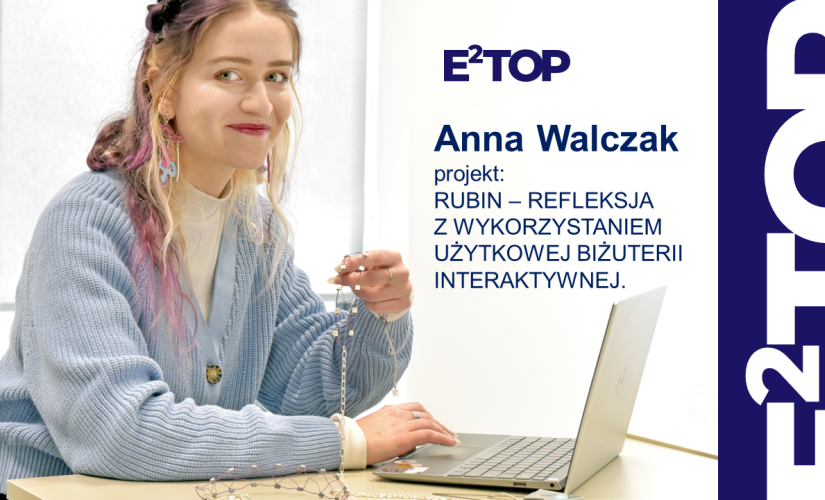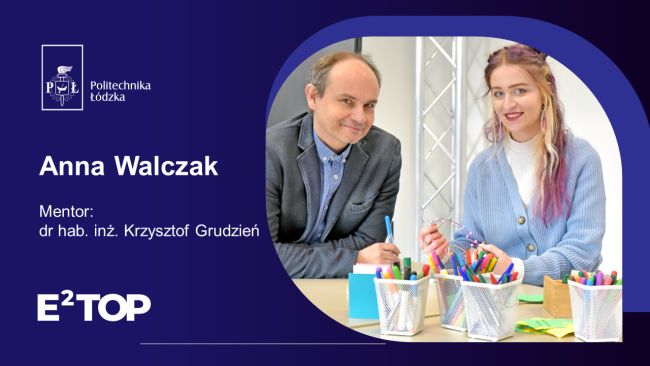When she went to university, she wanted to work, designing and constructing robotic medical systems. However, things turned out differently and she joined UbiCOMP – a student research group, which conducts research in the field of human-computer interaction (HCI).
RUBIN - this is the name of your project. What is hidden under it?
Reflection using user interactive jewelry. Its aim is to investigate whether (and how) technology can be embedded in jewelry to encourage reflection on one's psycho-physical state. Jewelry has been a form of non-verbal communication for centuries (from signaling status, to self-expression or informing about belonging to a specific social, ethnic group, etc.). At the same time, it is known that appropriate, contextual information about the state of our body increases self-awareness regarding lifestyle. This significantly influences the creation of habits and decisions in the field of broadly understood wellbeing in the long term. I want to investigate whether, by embedding a series of biomedical signal sensors in jewelry, it can contribute to increasing awareness of one's own body. In addition, the use of jewelry forms allows for a more artistic representation of biomedical data, which is also interesting in the context of their reception and interpretation by users.
The combination of technology and medicine has enormous potential.
Although technology is present in almost every area of our lives, and wearable devices (worn on the body) are part of the daily image for many people, embedding technology in jewelry is still not a popular practice, and there are very few such devices on the market. In the longer term, such research may encourage manufacturers to explore jewelry forms in wearable devices. Perhaps in a few years, the functions of smart watches will not be limited to watches, but will take the form of bracelets, necklaces, or rings.

The biomedical data collected by these devices will be represented in a more artistic way, instead of graphs in applications, which for many users are complicated and tedious to analyze. In addition, looking further into the future, knowing the guidelines for design can contribute to reducing the stigmatization associated with wearing medical devices. For example, recent research indicates that adapting the appearance of hearing aids to one's own preferences (decorating them with symbols, favorite colors, or giving forms expressing the personality of users) makes such devices more willingly worn.
What research goal have you set for yourself?
I want to facilitate the design of wearable devices in jewelry forms in such a way that they contribute to increasing reflection on the psycho-physical state. Examining user preferences will allow for the choice of modalities for conveying such information: whether haptically - for example by vibration, visually - displaying them using light compositions or movement of jewelry elements, or even audibly. The results of the research will also allow to determine the preferred appearance of such devices - do users want such jewelry to look like ordinary and "hide" its functionalities? Or maybe they dream of using the possibilities of technology and embedding glowing, dynamic, moving elements, emphasizing the interactivity of such jewelry. Is there a specific style of jewelry that particularly well combines with interactive functionalities? In addition, perhaps in the course of the research it will be possible to identify the reasons why interactive jewelry has not become popular on the consumer market and in the longer term this will allow to change it.
I am currently working on another element of interactive jewelry - a bracelet that will be able to display the subjective feelings of the person wearing it. The results of these studies will show whether such display of user feelings also contributes to the reflection of observers, for example by increasing empathy.
Your mentor is also the supervisor of UbiComp. Was it a natural choice?
Krzysztof Grudzień, PhD, DSc, has experience in working with students and in research in the field of human-computer interaction, especially in issues related to wearable technologies. Since I joined UbiCOMP, Professor Grudzień has always supported students in their projects and saw potential in even very unexpected ideas, while honestly pointing out any shortcomings of the proposed ideas and anticipated difficulties.
What inspires you?
Scientific work has many inspiring aspects: access to the latest technologies, the opportunity to work in an international environment and the need for continuous development. For me, however, the most inspiring is the fact that for a moment, analyzing the collected data, you are the first (and only) person who is aware of a given relationship or phenomenon.

I quickly became the main participant in an international project in which we studied the sensitivity of the human neck to vibratory stimuli in terms of applications in wearable devices. The actions carried out as part of the project, we then described in the form of a scientific article, which was published and presented at an international conference. Human-computer interaction aroused my curiosity due to its interdisciplinarity - I have always been interested in many fields of science, as well as art. In my free time, I draw, crochet or construct jewelry. Participating in the life of UbiCOMP, I realized that this area of computer science will allow me to combine my passions with science. In the UbiCOMP student research group, I developed my skills related to computer science, electronics and additive manufacturing technologies (3D printing) and subtractive (CO2 laser, CNC milling machine). In addition, in the research group I met people who became very close to me. I am currently the chairwoman of UbiCOMP, the author of four publications at international conferences, and I see my future in the field of HCI and plan to continue scientific activity in this area, staying for doctoral studies at Lodz University of Technology.
Krzysztof Grudzień, PhD, DSc:
Cooperation within the E2TOP program with Ms. Anna Walczak is going very well. As part of the research project, she is designing and implementing wearable devices in the form of jewelry in such a way as to encourage users to reflect on their own psycho-physical state. Although Ms. Anna is studying in a technical field, she definitely shows in her actions an understanding of the need to take into account the needs of users when developing innovative technological solutions, which significantly affects the quality of the research work carried out. The project began its journey from organizing a series of participatory workshops with experts in the field of design. Further actions concerned the design of an interactive necklace prototype and research conducted with users. The collected and analyzed results of experimental research are a step towards the development of an interactive solution in the form of jewelry, encouraging conscious reflection, not only of the users wearing it, but also of third parties, observers of the jewelry.
Interviewed by Agnieszka Garcarek-Sikorska


